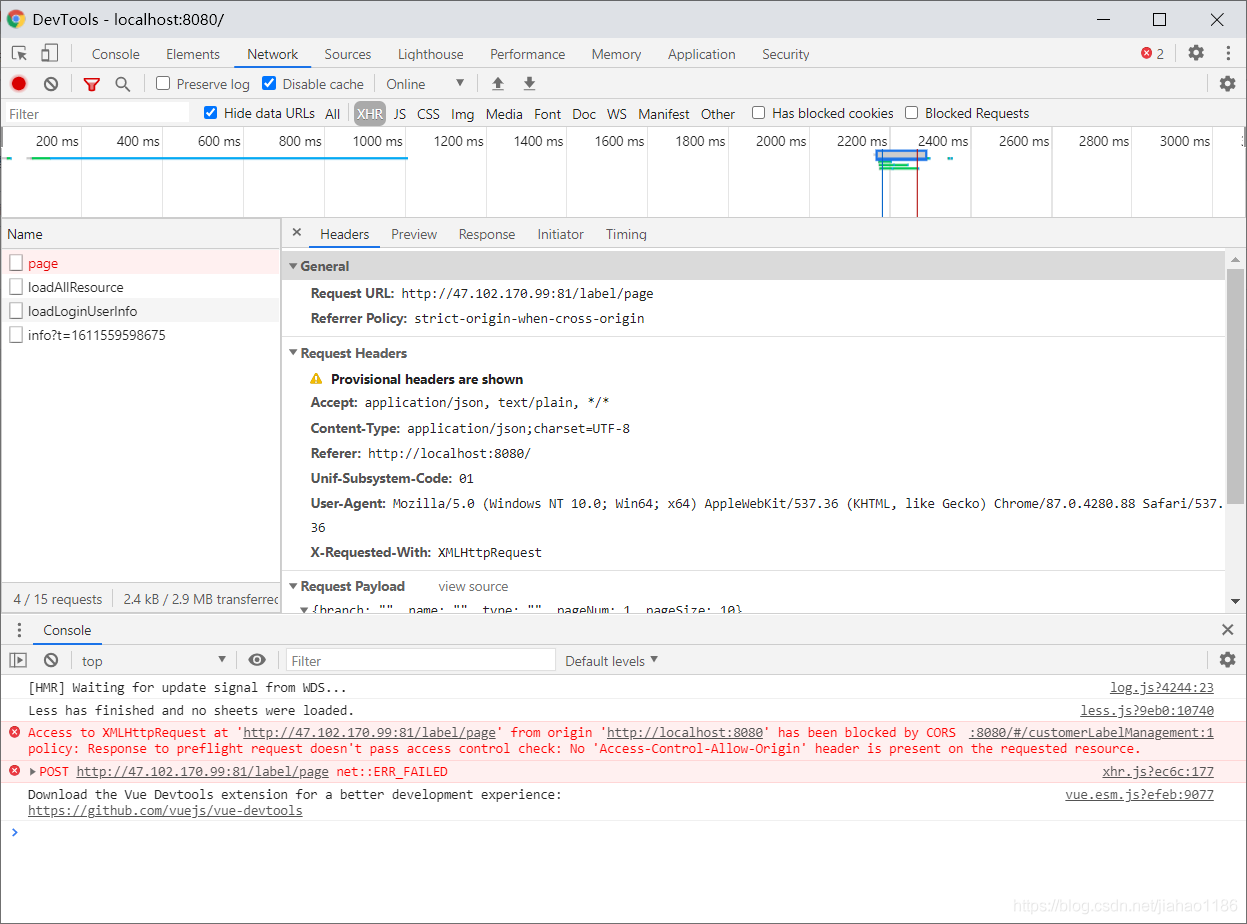1. Problem Description: cross domain problem in front end call interface

2. Solution, add the following classes
import org.springframework.context.annotation.Bean;
import org.springframework.context.annotation.Configuration;
import org.springframework.web.servlet.config.annotation.CorsRegistry;
import org.springframework.web.servlet.config.annotation.WebMvcConfigurer;
@Configuration
public class CorsConfiguration {
@Bean
public WebMvcConfigurer corsConfigurer() {
return new WebMvcConfigurer() {
@Override
public void addCorsMappings(CorsRegistry registry) {
registry.addMapping("/**")
.allowCredentials(true)
.allowedMethods("POST", "GET", "PUT", "OPTIONS", "DELETE")
.allowedOrigins("*");
}
};
}
}
The 1) Attribute value, origins: configure the sources that can be accessed, for example: 0 https://adong.blog.csdn.net/article/details/113126033 2) Property methods: configure the methods of cross domain request support, such as get, post, delete, put, and return all supported methods at one time. 3) Attribute maxage: configures the valid time of the pre check request. The unit is seconds. It indicates how long the second pre check request does not need to be issued. 4) Attribute allowcredentials: configure whether to allow sending cookies for credential requests. Cookies are not sent by default. 5) Attribute allowedheaders: configure the allowed custom request headers for pre checking requests. 6) Attribute exposedheaders: configure the header information of the response, in which other header information can be set. Without configuration, cache control, content language, content type, expires, last modified and pragma fields can be obtained by default.
> access control allow- Credentials
allowedheads
string array
class or interface
no
access control request heads
Note:
exposed heads
string array
class or interface
no
access control expose heads
* indicates that all domain names are allowed.